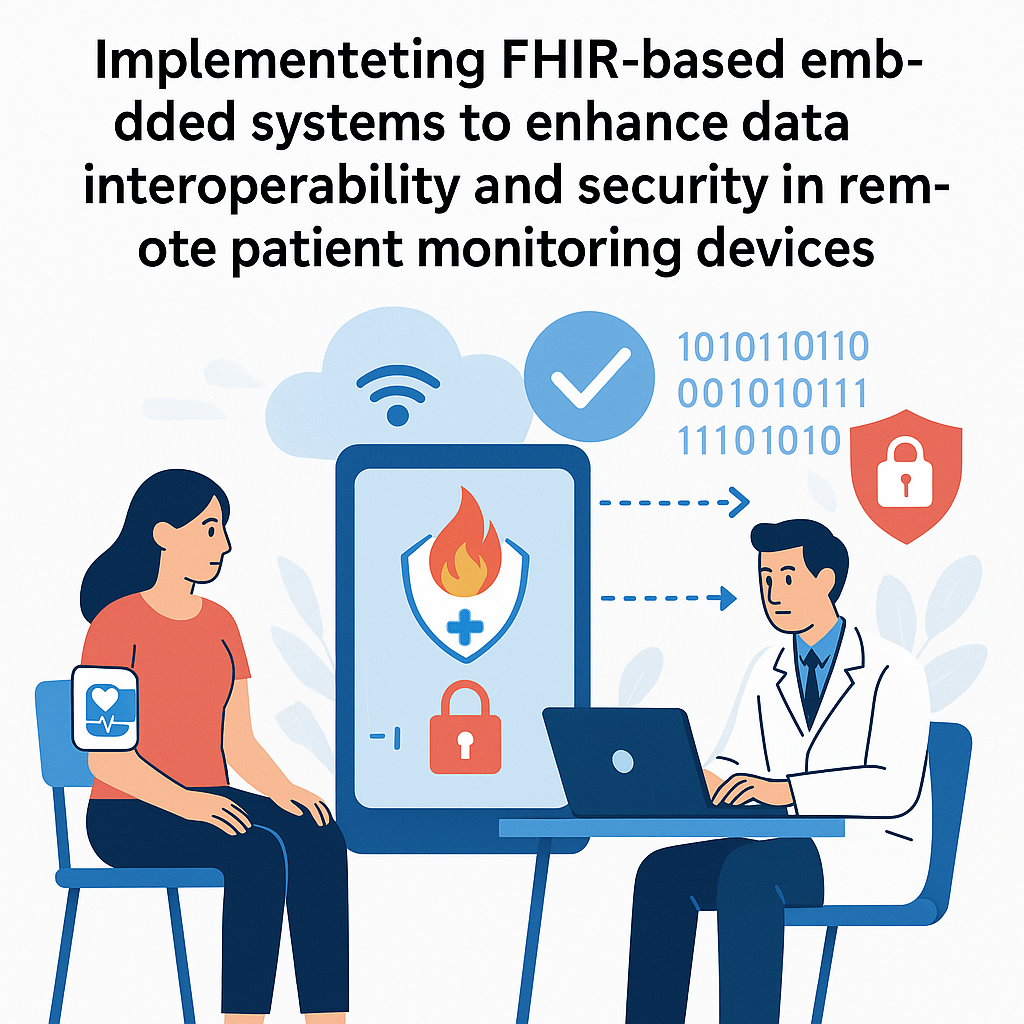Introduction
In the era of digital healthcare, remote patient monitoring (RPM) devices are revolutionizing the way healthcare providers interact with patients. With the increasing reliance on these technologies, ensuring data interoperability and security becomes paramount. One promising approach to address these challenges is the implementation of FHIR (Fast Healthcare Interoperability Resources)-based embedded systems. This article explores how FHIR can enhance data interoperability and security in RPM devices.
Understanding FHIR
FHIR is a standard for exchanging healthcare information electronically. It was developed by HL7 International and is designed to facilitate interoperability between different healthcare systems. Here are some key features of FHIR:
- Resource-Based Structure: FHIR uses a resource-oriented approach, allowing developers to work with discrete units of information.
- RESTful API: It leverages modern web technologies, making it easier to implement in embedded systems.
- Interoperability: FHIR enables seamless data exchange between various healthcare applications, promoting better patient care.
Benefits of FHIR in Remote Patient Monitoring
Implementing FHIR-based systems in RPM offers several advantages:
- Enhanced Data Interoperability: FHIR’s standardized format allows for easy integration with existing healthcare systems, ensuring that data from various sources can be aggregated and analyzed effectively.
- Real-Time Data Access: With FHIR’s API capabilities, healthcare providers can access patient data in real-time, leading to timely interventions and better patient outcomes.
- Improved Patient Engagement: Patients can have access to their health data, enhancing engagement and promoting self-management of their health.
- Reduced Development Time: The simplicity of FHIR reduces the complexity involved in developing and maintaining RPM systems, allowing developers to focus on innovative features.
Security Considerations in FHIR-Based Systems
While the benefits of FHIR are significant, security remains a critical concern in healthcare data exchange. Here are some strategies to enhance security in FHIR-based RPM devices:
- Data Encryption: Implementing strong encryption protocols for both data at rest and in transit ensures that patient information remains confidential.
- Access Control: Utilizing robust authentication and authorization mechanisms restricts access to sensitive data to only those who need it.
- Audit Trails: Maintaining detailed logs of data access and modifications can help in identifying unauthorized access and ensuring accountability.
- Regular Security Assessments: Conducting routine security assessments and penetration testing can help identify vulnerabilities and mitigate risks.
Challenges in Implementing FHIR in Embedded Systems
Despite the advantages, there are challenges associated with the implementation of FHIR in RPM devices:
- Integration Complexity: Integrating FHIR with legacy systems can be complex and may require significant resources.
- Standardization Issues: Although FHIR aims for standardization, differences in implementation across various systems can lead to inconsistencies.
- Resource Constraints: Embedded systems often have limited resources, which can hinder the full utilization of FHIR capabilities.
Case Studies of FHIR Implementation
Several healthcare organizations have successfully implemented FHIR-based systems in their RPM devices:
- Case Study 1: HealthTech Solutions – This organization integrated FHIR into their RPM platform, allowing seamless data exchange with electronic health records (EHRs). This led to improved care coordination and a 30% reduction in hospital readmissions.
- Case Study 2: SmartHealth Devices – By adopting FHIR standards, SmartHealth was able to enhance patient engagement through a mobile app that provides real-time health updates, resulting in higher patient satisfaction scores.
Conclusion
The implementation of FHIR-based embedded systems in remote patient monitoring devices holds immense potential for enhancing data interoperability and security. As healthcare continues to evolve, embracing standards like FHIR will be crucial in ensuring that patient data is managed effectively and securely. By addressing the challenges and leveraging the benefits, healthcare providers can improve patient outcomes and drive innovation in the field of digital health.



